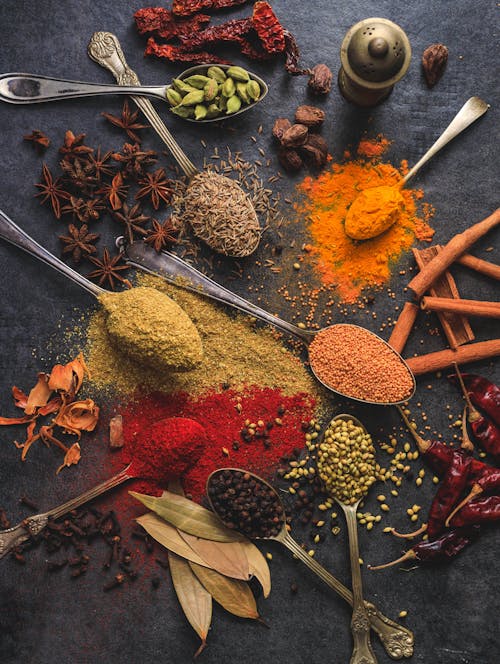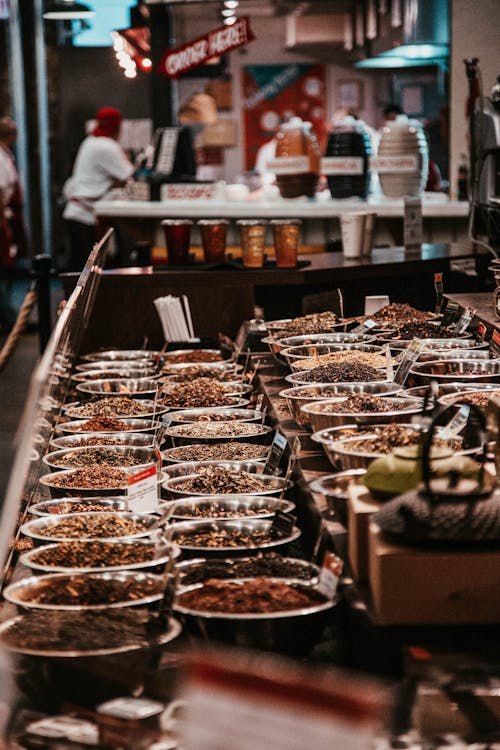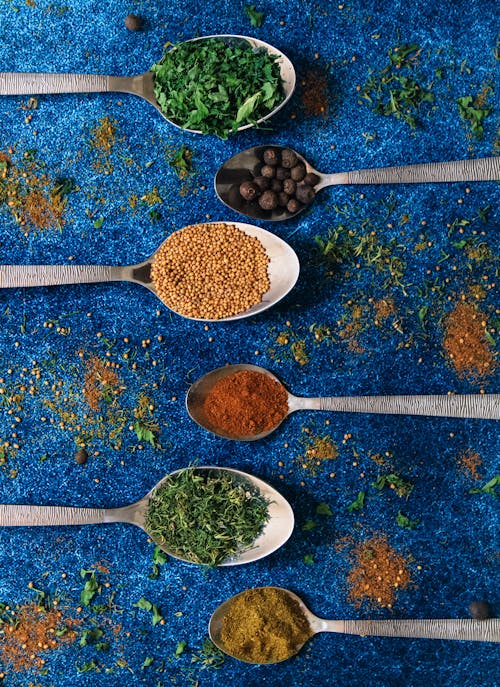The Boom of Organized Spice Market and its future outlook

Indian spice wholesale
Indian spices are one of the most popular ingredients in many cuisines around the world. From curries to naan breads, Indian spices are a must-have in any kitchen. For any person looking to invest in a quality spice rack, they must check out Indian spice wholesale.
Types of spices
There are many different types of spices available on the market and each has its own unique flavor. In this article, we will discuss the different types of spices and their corresponding uses.
Black pepper is one of the most common spices used in cooking. It is used to add flavor to food, thicken liquids, and prevent food from sticking to the pan. White pepper is a less potent form of black pepper that is usually used in sauces or as a condiment. Cayenne pepper is a hot red pepper that is used for its fiery flavor. Paprika is a smoked Hungarian pepper that can be used to add color and flavor to dishes. Garlic is one of the most common spices used in cooking. It can be used to add flavor to food, prevent food from sticking to the pan, and disinfect surfaces. Onion powder is a blend of ground onions and other spices that are used to add onion flavor to foods.

What are the Types of Indian Spice Wholesale?
Indian spice wholesale is a great way to get ones hands on the spices used in Indian cuisine. There are many different types of Indian spices, so you’re sure to find the right one for your dish. You can find whole spices, ground spices, and blends. Whole spices include cumin, coriander, cardamom, and turmeric. Ground spices include cumin, coriander, ginger, and black pepper. blends include garam masala, chaat masala, and turmeric.
There are a few things to keep in mind when purchasing Indian spice wholesale. First, make sure that the brand you’re buying from is reputable. Second, be sure to read the ingredients list carefully. Many Indian spice brands contain hidden sugars and other unhealthy additives. Finally, use the spices as directed in your recipe or as a guideline for how much to use based on your preference.
How to Select the Right Indian Spice Wholesale?
When it comes to selecting the right Indian spice wholesale, it’s important to consider several factors. Here are four tips to help you make the best choice:
1. Know your flavor profile. Indian spices can be used in many different dishes, so it’s important to know what type of flavor you’re looking for. If you’re cooking a dish that requires a lot of heat, for example, choose a hotter Indian spice wholesale. On the other hand, if you’re looking for a subtle flavor profile, go with a less-pungent variety.
2. Consider your budget. Indian spices can be expensive, so it’s important to be realistic about your budget before making your purchase. Some spices, like cumin, are more affordable than others.
3. Consider your cooking style. Some Indian spices are traditionally used in specific types of cuisine, like Punjabi dosas or tandoori chicken. If you’re not familiar with these recipes, it might be best to stick with premade blends or store-bought spices instead of purchasing individual ingredients from an Indian spice wholesale store.
4. Be mindful of expiration dates and storage instructions. Each individual spice has specific storage instructions.

What is Indian Spice Wholesale?
Indian spices wholesale can refer to the sale of whole spices, blends and mixes, or single-origin spices. The wholesale market for Indian spices is one of the largest in the world. The main reason for this is that Indian cuisine is one of the most popular around the world, and there is a high demand for Indian spices. This demand has created a lucrative market for Indian spice wholesalers.
Wholesalers of Indian spices offer a wide range of products, including whole black peppercorns, cumin seeds, cardamom pods, cloves, gingerroot, fenugreek seeds, mustard seeds and more. Many wholesalers also offer bulk spices in both whole and powdered form. In addition to selling whole spices, some wholesalers offer pre-packaged formulations that combine multiple single-origin spices to create flavor profiles that are not possible to achieve using only individual ingredients. Wholesale prices for Indian spices are often lower than retail prices due to the high volume of sales that the industry produces. This allows consumers to enjoy high-quality Indian spices at an affordable price point.
What Are the Benefits of Buying Indian Spice Wholesale?
When you buy Indian spice wholesale, you can save a lot of money. Here are some of the benefits:
– You can customize your spice mix to fit your specific needs. This means you’ll be able to create dishes that are unique to your own taste.
-You can find spices that are hard to find at retail stores. You might be able to find rare spices that are only available through Indian spice wholesale sellers.
– You’ll be able to purchase spices in different quantities, which means you can use them for multiple recipes without having to buy them again.
– You’ll save money: Buying in bulk will usually save you a lot of money over buying individual spices.
– You’ll have more variety: Not all spice vendors carry every type of spice, so by shopping at an organised market, you’ll be able to find exactly what you need.
– You’ll get quality ingredients: Most of the vendors at an organised market are reliable and commercial Spice Houses that take pride in their products. This means that you can be sure that the ingredients used in your recipes will be of high quality.
– You’ll get fresh ingredients: Most of the vendors at an organised market operate as small businesses and are therefore eager to get their products into the hands of consumers as quickly as possible.

How to Find Indian Spice Wholesale Online?
If you’re looking for Indian spices wholesale, there are a few places to start. One option is to search for an online spice store that specializes in Indian spices. Another option is to contact a local Indian grocery store and ask if they carry any Indian spices wholesale. Both of these options will require some legwork, but they’ll both be worth it if you’re in the market for some authentic Indian spices.
The Organized Spice Market in India
Organized Spice markets are a popular way to purchase spices in India. These markets are often characterized by their organized layout, with vendors arranged in aisles, and buyers able to browse the aisles without having to search for specific items. They also tend to be more affordable than buying spices at regular grocery stores. An organised spice market is a market where spices are sold in bulk to customers. These markets typically have a more organised layout and are often visited by customers who are looking for specific spices. This can be beneficial for businesses because it means that they can sell their spices at a lower cost than if they were sold individually. It can also be beneficial for customers because it means that they can buy spices in bulk and save money.
One of the most popular organized spice markets in India is the Saradha Market in Kolkata. This market is open every day except Sunday, and it is estimated that it sells around 2 million kilograms of spices each year. The Saradha Market is also known for its high quality standards, and it is one of the few markets in India that has been certified by the World Association of Herbal Producers (WAHP).
Another popular organized spice market in India is the Mumbai Spice Market. This market is open every day except Sunday, and it is estimated that it sells around 1 million kilograms of spices each year. The Mumbai Spice Market is also known for its high quality standards, and it is one of the few markets in India that has been certified by the World Association of Herbal Producers (WAHP). There are also a number of unorganized spice markets in India.

Export of Spices from India
India is one of the world’s top spice exporters, with exports valued at $6.5 billion in 2016. The country is home to over 1,000 spice varieties, making it one of the most varied and diverse spice markets in the world. Indian spices are used in various cuisines throughout the world, including those from India’s neighbours Pakistan and Bangladesh.
The main source of spices for India is Indonesia, followed by Thailand. However, India has been able to create a strong position in the global market due to its wide variety of spices as well as its quality and reliability. In particular, India is well-known for its black pepper, cardamom, cinnamon, cloves, nutmeg and turmeric.
The Indian spice trade has undergone significant growth in recent years owing to increasing demand from abroad and improvements in infrastructure. The country has also made concerted efforts to improve its image as a reliable supplier of spices and improve export quality standards.
Competition in the Indian Spice Market
With a population of over 1.3 billion people, India is one of the world’s most populous countries. According to the World Bank, in 2016 India had the world’s fastest-growing economy with an annual growth rate of 7.5%. With such an expansive and growing population, it is no wonder that the Indian spice market is rapidly expanding. The Indian spice market is expected to grow at a rate of 10% annually through 2020. In 2016, the Indian spice market was valued at $2.5 billion. The spices market in India is dominated by private players with 67% share in 2016.
The primary drivers of growth in the Indian spice market are increased demand from domestic consumers and increased exports to neighbouring countries. Domestic demand for spices has been increasing due to rising incomes and rising popularity of Indian cuisine abroad. Additionally, increasing exports to neighbouring countries such as Sri Lanka and Bangladesh accounts for a significant share of total exports from India. The key players in the Indian spice market are multinational companies such as McCormick & Company (McCormick), Hindustan Unilever (HUL), and Procter & Gamble (P&G). These companies are able
How is an organised spice market different from a grocery store?
Grocery stores typically carry a much wider variety of spices, both in terms of quantity and quality. While an organised spice market may have more high-end spices, it also provides a better selection of less expensive spices. Additionally, an organised spice market often offers bulk discounts on spices, which can be significant savings over purchasing smaller quantities at grocery stores. Lastly, an organised spice market often has knowledgeable staff who can recommend specific recipes or ingredients that would benefit from the use of specific spices.
Future Outlook for the Organized Spice Market in India
The organized spice market in India is forecast to grow at a rate of 7.8% over the next five years, according to a report by market research firm Nielsen. This growth is expected to be driven by increasing demand from the hospitality and food service industries. In addition, the rise in popularity of ethnic cuisines is also expected to contribute to the market’s growth. The growing ecommerce diaspora also promotes the spice market.


